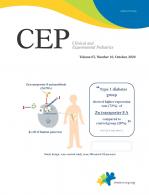Group B Streptococcus (GBS) infection in neonates is acquired in utero through a clinically symptomatic or asymptomatic intra-amniotic infection, during rupture of the membranes, or during passage through the vagina colonized with GBS. Most early-onset sepsis (EOS) cases in neonates are secondary to vertical transmission from maternal vaginal and rectal GBS colonization. EOS by GBS is a leading cause of severe infection in the neonate [1]. Therefore, evaluation of the risk factors for EOS is important to its optimal prevention and treatment [2]. GBS colonization rates reportedly vary geographically at 18.6%–26.5% in the United States [1] and 6%–32% in Europe [3]. Screening for the intrapartum administration of antibiotic prophylaxis (IAP) has been performed using universal or risk-based GBS screening. The universal GBS screening approach involves routine antepartum GBS vaginal and rectal cultures of all pregnant women; subsequently, all who are colonized receive IAP. In the risk-based GBS screening approach, women receive IAP according to the presence of risk factors [4]. Universal GBS screening is practiced in the United States and Canada and in European countries with some modifications, whereas risk-based GBS screening is recommended in the United Kingdom, Denmark, and the Netherlands [4,5]. Owing to these preventive strategies, the incidence of EOS by GBS has markedly declined over the 15 years from 1.7 cases per 1,000 live births to 0.34–0.37 cases per 1,000 live births in the United States [1].
In South Korea, research is lacking on which approach is more effective, while maternal GBS colonization data are insufficient due to low GBS prevalence rates [6,7]. However, recent studies reported an increase in maternal GBS colonization from 0.3%–5.9% before 2010 to 2.0%–11.6% in recent years [8-16] (Table 1). A Korean nationwide survey reported that GBS accounted for 0.5% of all cases of neonatal sepsis and was increasing after 2000 [7]. In this regard, there is growing concern regarding the introduction of the universal GBS screening approach in South Korea instead of the risk-based GBS screening approach [6]. Risk-based GBS screening may miss preventable GBS cases in countries with a high incidence. However, universal GBS screening is cost-ineffective because the incidence of GBS neonatal sepsis in South Korea is low, and it has several disadvantages including false-negative screening results, risk of antibiotic-induced anaphylaxis, and changes in GBS serotypes resulting in antibiotic resistance [4,5].
Therefore, the study conducted by Achten et al. [17] published in the current issue has great implications for South Korea, as it reveals that use of the EOS calculator is still valid with the risk-based GBS screening approach.
This study evaluates the impact of GBS status when applying the EOS calculator in risk-based GBS screening, as it calculates the EOS risk and recommends management at birth and after the recalculation of a definitive GBS status. The EOS calculator is used worldwide to improve the accuracy of empirical antibiotic administration for assessing multivariate risk based on 5 maternal risk factors and the patient’s clinical condition to estimate EOS. The management recommendation consists of 3 steps [18]. According to Dutch guidelines, risk-based GBS screening is performed in cases of prematurity, intrapartum fever (≥38°C), rupture of the membranes ≥18 hours, previous delivery of an infant affected by GBS disease, and IAP administered in cases of GBS bacteriuria [19]. Nevertheless, maternal GBS status is an important risk factor on EOS the calculator; in risk-based GBS screenings, it is possible that maternal GBS colonization information may not manifest until birth. Therefore, it is important to evaluate whether the EOS calculator is compatible with risk-based GBS screening.
In this study, the EOS calculator recommendation remained unchanged for 97% of neonates at risk for EOS after recalculation of the EOS risk using the definitive GBS results, which were not yet available at birth. “Unknown” cases of GBS status comprise 86.4% of births and 21.6% of definitive GBS results. Based on results of this study, the risk-based GBS screening method has only a marginal impact on EOS calculator management recommendations in neonates. In other words, use of the risk-based GBS screening method did not result in the withholding of antibiotic treatment from infants at risk of EOS.
In conclusion, use of the EOS calculator is still valid with the risk-based GBS screening approach. This finding has great implications for South Korea, where controversy regarding the need for universal GBS screening exists. Risk factor assessments using an EOS calculator are worth applying before the introduction of universal GBS screening. Further studies are needed to confirm EOS calculator utility in South Korea clinical practice.





 PDF Links
PDF Links PubReader
PubReader ePub Link
ePub Link PubMed
PubMed Download Citation
Download Citation


